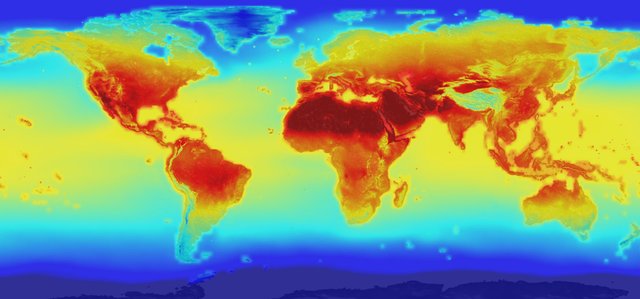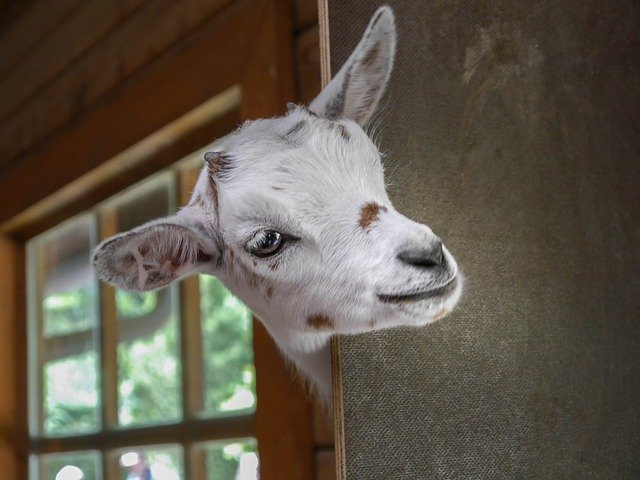Climate: Global warming has occurred before, never ever 7 billion people.
Climate: Global warming has occurred before, never ever 7 billion people

Trending opinion
Global warming and climate change have always existed before. This is a natural climate process. In the past epochs of geological history, it was already much warmer than today. In addition, climate change has been taking a break for 15 years and the predicted rise in temperature has failed. The climate forecasts are therefore not correct. You don't have to worry about that.
Facts
Fact is: In the history of the earth, there have been periods in which CO2 concentrations and temperatures on earth have been significantly higher than they are today. There were also phases characterized by lower average temperatures. One thing distinguishes the present situation from that of the past, however: more than 7 billion people live on earth, all of whom want to be fed and are threatened by rapid climate change in their ancestral habitats.
1. Climate change: What distinguishes the current climate situation from the change in warm and cold times of earlier times?
In Earth history, the ice age, defined by a glaciation of the poles, alternates with normal phases in which the poles are not glaciated. In terms of geological history, we are currently in an ice age, the so-called Cenozoic Ice Age, with the glaciated Arctic and Antarctica. Within this ice age cold and warm ages alternate, the last cold age (commonly known as the ice age) ended about 11,000 years ago. Since then, we have been living in the so-called Holocene, a warm period, with corresponding natural warming. In the last 1,000 years, the world's average temperatures - unusually long - have been relatively constant. It was not until the extensive onset of industrialization in the mid/end of the 19th century that temperatures began to rise much faster. The concentration of CO2 in the earth's atmosphere is also rising continuously from then on and clearly surpasses previous record levels.
Historical development of the co2 concentration in the last 400000 years

2. Discussions on climate change: Man, sun and the invisible climate risk
The discussions on climate change essentially focus on whether the emission of carbon dioxide and other greenhouse gases by humans contributes to a significant change in the climate or whether external influences (sun, volcanoes, etc.) have a greater or sole influence.
The fact that greenhouse gases (e. g. methane, carbon dioxide, water vapour) have an effect on the climate is well documented. The Earth's atmosphere consists of 78 percent nitrogen and 21 percent oxygen. These two components already account for 99 percent of the atmosphere. The remaining constituents are trace gases, which either originate from radioactive decay (noble gases such as argon, neon) or belong to the group of atmospheric trace gases (carbon dioxide, methane, sulphur dioxide, ozone, water vapour). Although the concentration of these trace gas components in the atmosphere is therefore extremely low, the climatological and air-chemical significance and thus the effect on the climate is all the higher.
The natural greenhouse effect alone causes us to have an average temperature of +15°C on Earth. Without these trace elements, which are present in very low concentrations, the average temperature of the earth would be -18° C. This makes the high temperature leverage of these low trace gas concentrations on the termperatures and climate clear. It is only controversial whether and which temperature effect can be attributed to man-made emissions of additional greenhouse gases. Over the last 60 years, energy-related processes have emitted more than 1,000 billion tons of carbon dioxide into the atmosphere worldwide and this has led to the rapid increase in concentration (see chart above). Is this rapid increase in CO2 concentration really too low to have an impact on the climate, or is the climate system so sluggish that the consequences are only visible after a delay and then irreversible?
In the end, there is no temporal "trial run"on Earth, there is no second chance. Once a process of climate change has been set in motion by the combustion of fossil fuels with all its consequences (nutritional problems, population migration, etc.) can no longer be reversed. This is the climate risk that affects not today's but future generations. Climate sceptics often demand absolute or 100% proof of global climate change and the negative consequences it entails. Would the same sceptics, assuming that there is only a 10% personal risk that the wheel nuts on their own car are loose, drive this car?
3. Climate Forecasts: Does climate change really make a break?
Climate critics often point out that the climate forecasts are wrong because global temperatures have not been rising for 15 years and therefore speak of a climate lie. Is climate change or the rise in temperature really taking a break? Based on the global temperature development chart with NASA data, global temperature values continue to move within the trend channel. It remains a mystery how climate critics come to the conclusion from the overall development of global temperature trends and the development of CO2 concentrations that climate change does not take place and that scientists' climate forecasts are wrong.
Climate: Global Development Temperature Index 1880-2016

4. The twelve warmest years in the world (1880 - 2016)
The following table of the US authority NOAA shows the years with the highest temperature deviation (combination of land and sea).

5. climate, weather and weather - the differences
Misunderstandings often arise in connection with the debate on climate change. Phases with relatively low temperatures in one place are often used in subjective perception as evidence that climate change does not exist. However, the definition of weather, weather and climate differs considerably. The decisive factor is the observation on the timeline:
The weather only describes the current state of the atmosphere in a region or location, i. e. today the weather is rainy, with temperatures of xyz, the wind comes from xyz direction. Weather is the weather from a few days to one season. Typical for a weather pattern, for example, is the time period "altweibersommer". The climate stands for a summary of the atmospheric description in a place over a period of at least 30 years.
--
6. Can climate change be halted or reversed?
Whether climate change can be halted is a question of time. Example: If a snow avalanche is kicked off once, then you may be able to stop the process at the very beginning, but with increasing duration it becomes more and more difficult to impossible. The huge craters in Northern Siberia show which chain reactions climate change is already causing. The permafrost thaws on the enclosed greenhouse gas methane, which is released additionally.
It is not impossible to "reverse"climate change, for example by recovering the carbon dioxide emitted, but it is difficult and energy-intensive. When fossil fuels are burned, the following process takes place: carbon + oxygen = energy + carbon dioxide. The energy released is used by people, including in machines. The process can be inverted in principle, but the energy that was previously released and used must be reinvested.
7. conclusion
On the issue of climate change, at the heart of the discussions is the question of whether and to what extent mankind has an impact on the climate. Does man have to accept and adapt to climate change or can mankind actively do something about it? This is the fundamental question facing climate protectionists and climate sceptics. As a result, people have only two options: to adapt to climate change with its effects and costs and to accelerate the development of CO2-free technologies (renewable energies) (CERINA plan).
A major concern of climate experts is the high speed with which current global warming is taking place in geological terms. This means that today's situation is fundamentally different from previous ages with higher CO2 concentrations and average temperatures. The greatest risk, however, is for humans themselves:
Development of the world's population - status quo and forecast until 2050

In the past millions of years there have never been as many people on earth as today who want to be fed. Currently, more than 7 billion people live in the world and the population continues to grow. The effects of global, rapid warming thus have a much greater impact on humanity in its traditional habitats. It should come as no surprise that there will be more climate refugees in the future, even if migration development is not likely to be based on a monocausal reason. Population-rich threshold and developing countries in particular are affected by the direct consequences of global warming, such as crop failures due to droughts or rising sea levels in their current habitat. This is the high climate risk the world faces. A relativization of this fact by the descriptive reference to earlier epochs with warm times seems more than reckless in the light of these correlations.
Sources: 1 , 2 , 3 , 4 , 5 , 6
Thank you for taking your time, if you found this article informative, please consider to give it an upvote!
Greetings @ddot
Feel free to

Greetings @ddot
Feel free to

@ddot payed 2.0 SBD to @minnowbooster to buy a stealth upvote.

transaction-id f9543522d9babb8715d348278caa87261b77f917
@stealthgoat